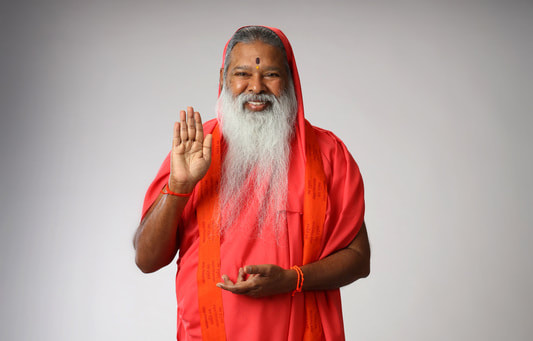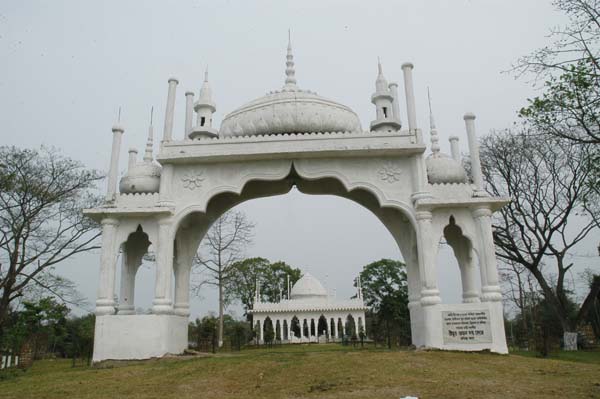Pune: Shankar Maharaj, revered as a Perfect Master within the Nath Siddha tradition, left an indelible mark on the spiritual landscape of Maharashtra. His life, spanning over a century, is filled with extraordinary experiences, miracles, and teachings that continue to influence a wide circle of followers to this day.
Early Life and Spiritual Awakening
Shankar Maharaj was born in approximately 1800 in Mangalwedha, near Pandharpur, into a family named Upasani. The early years of his life were marked by mischief and a restless spirit, and it is said that as a young boy of seven or eight, he ventured into the forests near the Chandrabhaga river in pursuit of a deer. The chase led him to a Shiva temple, where he encountered a sanyasi who would become his spiritual guide.
This sanyasi, who turned out to be Swami Samarth of Akkalkot, intervened when the young boy attempted to kill the deer, offering him spiritual advice instead. Despite Shankar Maharaj’s initial resistance, when he shot an arrow at the deer in the sanyasi’s arms, the arrow inexplicably fell blunt. It was in this moment that Shankar Maharaj received “Sparshdiksha” or initiation through the touch of the saint, marking the beginning of his spiritual journey.
Under the guidance of Swami Samarth, Maharaj spent six months in intense spiritual training, learning profound yogic principles. He was then instructed to embark on a pilgrimage, which took him to the Himalayas, where he performed rigorous penance. After returning from the mountains, he spent time meditating with Siddha-Yogis in the Vriddheshwar area near Nagar, an important centre for Nath Siddhas.
The Guru-Disciple Relationship
Dr. Nagesh Dhaneshwar, a prominent disciple of Shankar Maharaj, chronicled much of the Master’s life and teachings. Born in 1899, Dr. Dhaneshwar began his association with Maharaj as a young boy in Nagar around 1910. The story of their bond is profound, and it is said that their relationship spanned more than 600 years, with previous lifetimes shared in close association with Gahininath, a revered saint of the Nath tradition.
Dr. Dhaneshwar recalls one significant moment in his life when he became frustrated with Maharaj’s playful mischief. After pushing him down a set of stairs in anger, Dr. Dhaneshwar was struck unconscious. When he regained consciousness, he found himself in Maharaj’s lap, being lovingly caressed. This experience led to a deep realisation of the Guru’s unconditional love, marking the beginning of a true spiritual surrender.
Life in Pune and Spiritual Travels
Though Shankar Maharaj’s exact arrival in Pune remains unclear, it is believed that he began frequenting the region around the early 20th century. He travelled widely, visiting cities like Solapur, Akluj, and Pune, often staying with devotees and imparting spiritual wisdom wherever he went. Maharaj was drawn to places of Dattatreya influence, including Gangapur, Narsobawadi, Mahurgad, and Girnar, where he would share his teachings and offer guidance.
Known for his unconventional behaviour, Shankar Maharaj was described as a small-statured man with a striking appearance. He was characterised by his long arms, which reached below his knees, and his large, bright eyes that carried a childlike innocence. In his later years, Maharaj sported a beard and was often seen with a brandy bottle and a hunter’s whip. Despite his seemingly eccentric behaviour, his compassion and deep spiritual wisdom endeared him to his followers.
Maharaj’s teachings were rooted in the Nath Panthi tradition, which emphasises selfless service and the liberation of all beings. He often expressed his commitment to helping others without concern for his own liberation, embodying the idea that enlightened souls reincarnate to serve humanity across various communities.
A Life of Miracles and Compassion
Shankar Maharaj’s life was marked by numerous miracles, which he performed to deepen the faith of his devotees. These included predictions of future events, materialisation of objects, and the ability to be present at multiple places simultaneously. One of the most famous stories is that of him feeding hundreds of people from a small amount of food, demonstrating his mastery over physical limitations.
In addition to miracles, Maharaj’s interactions with his followers were often characterised by humour and directness. He had a tendency to use harsh language at times, but his words were never intended to harm; instead, they were seen as a means of removing the egos of his devotees, making them more receptive to spiritual growth.
His fondness for drinking brandy was well known, although it was said that his intoxicated appearance kept away unwanted attention. Only those with a deep spiritual calling could look past the outer image and approach him. Some followers even claimed that the brandy given to them by Maharaj was not alcohol but coconut water, revealing the Master’s ability to manipulate the material world.
Influence in England
Shankar Maharaj’s spiritual influence even extended beyond India. One of his notable disciples was a British Collector, who developed deep faith in Maharaj and considered him his spiritual guide. Taking Maharaj to England, the Collector introduced him to English society, where the Master spent ten years teaching yoga and spiritual practices.
In a conversation with Dr. Dhaneshwar, Maharaj explained that his ability to speak English came from understanding the universal principles underlying all languages. According to him, a person who is united with the source of all creation can understand not just human languages but the languages of animals and nature as well.
Final Days and Samadhi
Shankar Maharaj’s final days were marked by a quiet withdrawal from public life. On the day before his samadhi, Maharaj informed his devotees that he would soon leave his physical body. He chose an auspicious time for his departure: Vaishakh Suddha Ashtami. On April 24, 1947, after informing his closest disciples of his intentions, Maharaj entered into his final state of samadhi.
His body was interred at a location of his choosing, and a mound of flowers covered the site. Despite his physical departure, Maharaj’s presence continued to be felt by his devotees, and many claim to have experienced his spiritual visits after his samadhi, often during times of distress or when guidance was needed.
A Legacy of Spiritual Guidance
Shankar Maharaj left behind a legacy of spiritual teachings, personal transformation, and miracles that continue to guide his disciples. His principal disciple, Dr. Nagesh Dhaneshwar, and others, like Raosaheb Balwantrao Mehendale and the Mehendale family, have carried on his teachings, imparting spiritual wisdom to countless people.
Maharaj’s teachings emphasised the importance of selfless service, the pursuit of inner truth, and the practice of compassion. His life and miracles serve as a beacon for those on the spiritual path, a reminder that even in the most extraordinary of lives, the essence of humanity remains rooted in love and service to others.











